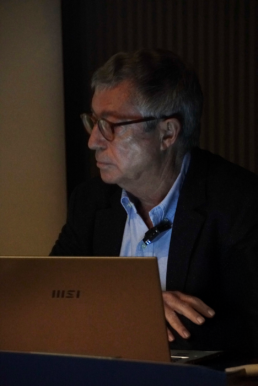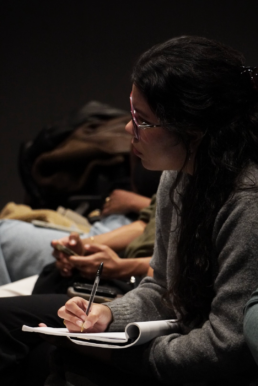Lecture by Alejandro Escribano: A Lesson on Urban Planning and City Development
DATE
29.01.2025
Recently, the students of the MArch Postgraduate Program in Applied Architecture had the privilege of attending a lecture by Alejandro Escribano, a renowned urban planner and architect, who shared his experience as the director of the General Urban Development Plan (PGOU) of Valencia.
This key project has shaped the city’s development over the past decades. During the lecture, Escribano delved into the challenges and lessons learned during the drafting of this plan, which began taking shape in the 1980s—a period of urban transformation not only for Valencia but for many other Spanish cities as well. Through his insights, students were able to gain a practical understanding of how large-scale urban planning is carried out and how both technical and social aspects must be considered to develop a functional, sustainable, and dynamic city.
Escribano explained how the challenges of that time were addressed and how, when planning a new city, it was necessary to consider its long-term structure, paying attention to spatial organization, infrastructure, mobility, and the integration of new developments within a historic city. The PGOU of Valencia, approved in 1988, represented a milestone in 20th-century urban planning, as it established an orderly growth model that not only responded to the immediate needs of the population but also considered sustainability and the quality of life of future inhabitants. Throughout his lecture, Escribano emphasized how architects and urban planners must be visionaries, planning not only for present needs but also for a future that, while uncertain, must be based on solid and adaptable principles.
In the final part of the lecture, Escribano shared with students his personal experiences in the development and implementation of other urban projects, such as partial development plans and urban renewal plans, which have given him in-depth knowledge of various aspects of urban planning, from initial design to on-the-ground execution. He highlighted the importance of collaborating with other professionals in the field, such as engineers, sociologists, and economists, to create truly effective and well-balanced plans. Additionally, he explained how cities must grow in a way that respects their surroundings and how urban planning must be sensitive to the historical and cultural contexts of each place, ensuring that development does not negatively impact urban and rural landscapes.
Alejandro Escribano, an architect trained at the Escuela Técnica Superior de Arquitectura de Valencia (ETSAV), pursued specialized studies in France and Madrid, which allowed him to acquire a broad and multidisciplinary perspective on urbanism. He served as the municipal architect of Valencia between 1981 and 1991, playing a key role in the transformation and modernization of the city during that period. Escribano was the director of the General Urban Development Plan of Valencia, developed in 1988, a project that left a deep mark on the city’s urban model and remains a reference in Spanish urban planning. Throughout his career, he has worked on numerous partial development plans and urban renewal projects, playing a fundamental role in revitalizing urban areas and adapting Valencia to the new demands of the 21st century. Moreover, he has shared his extensive academic knowledge as an urban planning professor at the Polytechnic University of Valencia, where he taught for 15 years, educating new generations of urban planners and architects with an integral vision committed to sustainable development and urban quality improvement. Through his professional and academic career, Escribano has established himself as a key figure in the field of urban planning, recognized for his ability to address the complex challenges of city design and planning.
MArch Valencia. Arquitectura y Diseño
© 2025 MArch Valencia. Arquitectura y Diseño
Privacy policy | Cookies policy | Terms of use



